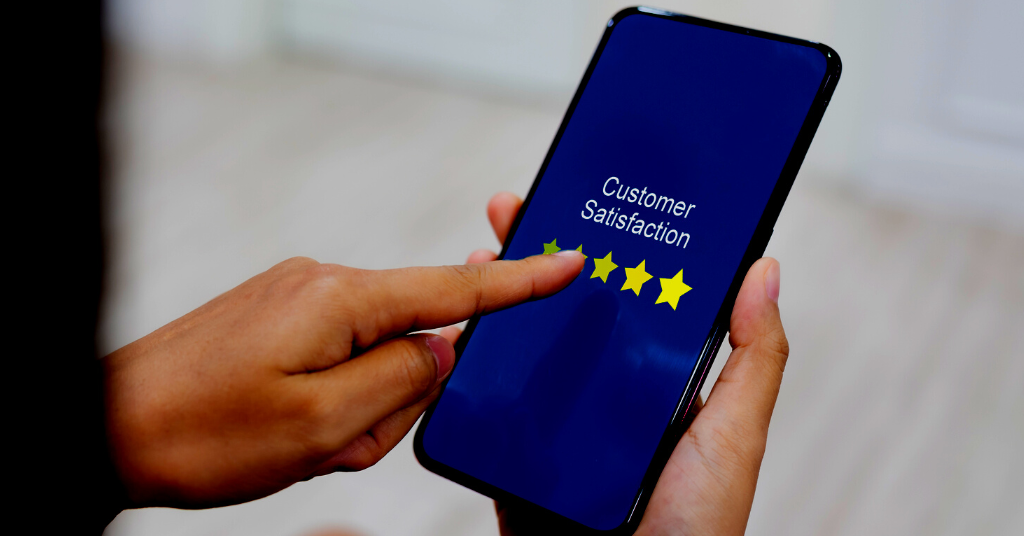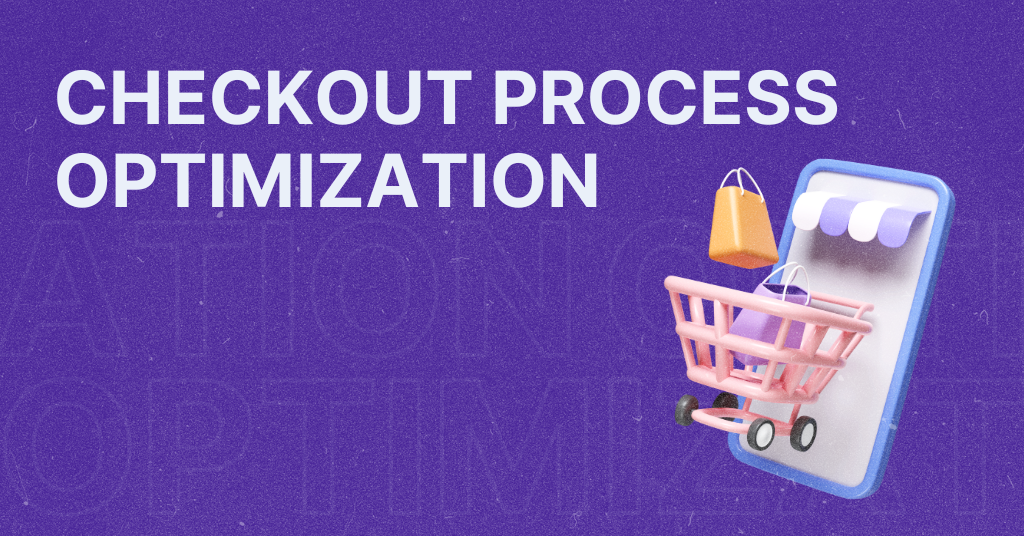
Mobile customer service: providing seamless support to shoppers
Mobile commerce, or m-commerce, has experienced exponential growth over the past decade. The convenience of shopping from the palm of one’s hand, anytime and anywhere, has reshaped the retail landscape. As consumers increasingly turn to their smartphones for shopping, businesses need to align their customer service strategies with this shift. In this article, we delve into the importance of mobile customer service and explore strategies to offer seamless support to shoppers on the go.
Importance of mobile customer service
In an era where smartphones have transformed shopping into a mobile and on-the-go experience, the significance of mobile customer service has never been more profound.
Here are the things you should pay attention to.
Accessibility: Empowering customers anytime, anywhere
The ability to access customer support services seamlessly has become a defining factor in customer satisfaction. Mobile customer service provides the gateway for customers to connect with businesses at their convenience, eliminating the limitations of physical locations and traditional business hours. Whether a customer seeks assistance while commuting, relaxing at home, or even in a brick-and-mortar store, the accessibility offered by mobile customer service ensures that help is just a few taps away.
This level of accessibility goes beyond the convenience factor. It demonstrates a commitment to placing the customer’s needs front and center, fostering a sense of trust and loyalty. When customers know they can rely on timely support through their mobile devices, they are more likely to engage with a brand and make repeat purchases. Additionally, the accessibility of mobile customer service contributes to a reduced customer frustration level. Long gone are the days of being put on hold for extended periods or waiting for email responses; mobile support allows customers to receive real-time assistance, making their shopping experience smoother and more enjoyable.
Businesses that prioritize mobile accessibility in their customer service strategies not only meet their customers where they are but also differentiate themselves in a crowded marketplace. As the digital landscape continues to evolve, the power of mobile customer service to bridge the gap between businesses and consumers remains a pivotal element in the overall customer experience.
Instant gratification
Mobile shoppers often expect quick responses. Effective mobile customer service can address inquiries promptly, ensuring customers don’t abandon their carts due to unanswered questions.
Mobile shoppers are a dynamic audience, often juggling multiple tasks while navigating through various apps and platforms. In this context, every second counts, and delayed responses can lead to frustration and potential lost sales. By offering real-time assistance through mobile customer service channels, businesses can capture their audience’s attention when it matters most—during the decision-making process.
The integration of live chat and chatbots within mobile apps and websites is a prime example of catering to the need for instant gratification. Customers can engage in conversations without the delay of emails or the hassle of phone calls, receiving answers to their queries right at their fingertips. This immediate interaction not only enhances the shopping experience but also demonstrates a commitment to customer satisfaction that resonates deeply with modern consumers.
In the age of instant gratification, mobile customer service serves as a powerful tool to not only address customer inquiries promptly but also to convey a message of efficiency, attentiveness, and value. By meeting the need for swift responses, businesses can create a positive impression, boost customer loyalty, and ultimately drive increased engagement and sales.
Personalization: Tailored experiences that foster connection
Modern consumers expect interactions that go beyond generic responses. They desire to be recognized and understood as individuals with distinct preferences and needs. Mobile apps and platforms often collect information about browsing history, purchase behavior, and even location data. By utilizing this data effectively, businesses can provide personalized support that not only addresses immediate concerns but also suggests relevant products or services, creating a seamless cross-selling or upselling experience.
Imagine a scenario where a customer receives a personalized recommendation for a complementary product while inquiring about a recent purchase through the mobile customer service chat. This level of engagement not only adds value to the customer’s experience but also showcases the brand’s dedication to meeting their needs in a comprehensive manner.
Personalization through mobile customer service goes beyond merely using a customer’s name—it involves understanding their preferences, anticipating their needs, and proactively providing solutions that align with their journey. With personalized connections, businesses can elevate their customer relationships, foster brand advocacy, and stand out in a competitive market where genuine and meaningful interactions are highly valued.
Multi-channel experience
A mobile customer service strategy that embraces the multi-channel approach acknowledges the diversity of customer preferences. Some shoppers might prefer to initiate a conversation on a mobile app, while others might opt for a quick query on social media. Regardless of the channel they choose, customers anticipate a consistent experience and timely resolution.
By integrating mobile customer service with other channels, businesses not only enhance the customer experience but also gain a holistic view of each customer’s journey. For instance, a customer who encounters an issue on a mobile app but seeks assistance on social media will not need to reiterate their problem; instead, the customer service team can access the previous interaction history and provide a seamless solution.
The multi-channel experience also empowers businesses to be where their customers are, meeting them at every touchpoint and creating a unified brand presence. In a world where consumer expectations for seamless interactions continue to rise, mobile customer service stands as a bridge between different communication avenues, ensuring that no matter how customers choose to connect, they receive consistent, relevant, and effective support.
Strategies for seamless mobile customer service
Mobile-friendly websites and apps
Start by ensuring your website and mobile app are optimized for mobile devices. A responsive design and user-friendly interface make navigation and interaction effortless for customers.
Central to a successful mobile customer service strategy is the foundation of mobile-friendly websites and apps. As mobile devices become the primary gateway for customers to engage with brands, providing a smooth and intuitive digital experience is paramount. A mobile-friendly design entails more than just resizing content to fit a smaller screen—it involves optimizing the user interface, streamlining navigation, and ensuring that every element is easily accessible and responsive.
Mobile shoppers are typically looking for quick and hassle-free interactions. A mobile-friendly website or app allows them to browse products, seek assistance, and complete transactions effortlessly, without the frustration of distorted layouts or slow load times. Moreover, a well-designed mobile interface contributes to a positive first impression, reflecting a brand’s commitment to staying current and catering to the evolving needs of its customers.
Read how mobile commerce is transforming the future of e-commerce.
From an operational standpoint, mobile-friendly websites and apps serve as the launching pad for effective mobile customer service. A seamless interface can seamlessly integrate live chat features, self-help resources, and access to customer support, ensuring that customers can access assistance without disrupting their shopping experience. In a digital landscape where user experience can make or break a customer’s perception of a brand, the investment in mobile-friendly design pays dividends by driving customer engagement, loyalty, and ultimately, revenue.
Live chat and chatbots
Implement live chat functionality on your mobile platform. Complementing live chat, chatbots take the concept of instant assistance to the next level. These automated systems use artificial intelligence to simulate conversations and provide quick responses to common queries.
Chatbots excel at handling repetitive and straightforward tasks, freeing up human agents to focus on more complex interactions. For example, a chatbot can guide customers through the process of tracking an order, while a human agent can intervene when the situation requires empathy and nuanced problem-solving.
The combination of live chat and chatbots offers a comprehensive approach to mobile customer service, catering to a spectrum of customer needs. From swift responses to immediate inquiries to efficient handling of routine tasks, these technologies ensure that customers receive timely and accurate assistance, even when engaging with a brand from the palm of their hand. By seamlessly blending human interaction with automation, businesses can create a dynamic customer support ecosystem that thrives in the mobile-driven landscape.
In-app support
Provide in-app support options, such as a dedicated help center or a contact form. This reduces the need for customers to switch between apps or devices to seek assistance.
In-app support can take various forms, from dedicated help centers filled with FAQs and troubleshooting guides to easily accessible contact forms or even integrated live chat features. This approach streamlines the customer journey by removing potential friction points and ensuring that support is available at the precise moment when customers require it. Moreover, it aligns with the principle of offering assistance without disrupting the overall app experience, fostering a seamless and cohesive interaction between the customer and the brand.
By embracing in-app support, businesses demonstrate a commitment to providing a holistic experience that respects the customer’s time and convenience. This approach not only contributes to a more positive perception of the brand but also leads to increased engagement, conversion rates, and customer loyalty.
Push notifications: Timely updates and relevant information
When used effectively, push notifications can serve as gentle reminders for abandoned shopping carts, provide order status updates, or inform customers about ongoing sales or limited-time offers. However, striking the right balance is crucial; inundating customers with excessive notifications can lead to annoyance and potential uninstalls of the mobile app. The key lies in delivering messages that genuinely add value to the customer’s experience, enhancing their connection with the brand.
Push notifications also capitalize on the immediacy of mobile devices, ensuring that important information reaches customers quickly. This becomes particularly relevant when dealing with time-sensitive matters, such as flash sales or last-minute changes to orders. With push notifications, businesses can enhance their mobile customer service strategy by providing customers with the right information at the right time, ultimately contributing to improved customer satisfaction and loyalty.
Self-service resources
Self-service resources cater to the diverse needs of customers, from those seeking quick answers to those looking for in-depth explanations. For instance, a customer curious about return policies can easily access the relevant information without waiting for a response from customer support. Another example, develop a comprehensive FAQ section and self-help resources that are easily accessible within your app. This empowers customers to find answers independently. Moreover, self-service options contribute to a streamlined customer service operation, as common queries can be resolved without human intervention, freeing up agents to focus on more complex and personalized interactions.
Omnichannel integration
Omnichannel integration ensures that regardless of whether a customer initiates a conversation on a mobile app, contin
ues it via email, or seeks assistance on social media, their interaction history, preferences, and context are seamlessly carried across channels. This means that a customer need not repeat themselves or rehash their issue when shifting between platforms. Instead, the support team can access a complete view of the customer’s interactions, enabling them to provide tailored assistance and recommendations based on the customer’s journey.
Ensure consistency across all customer service channels. If a customer switches from mobile app to web browser or social media, their interactions and information should seamlessly carry over.
Feedback and continuous improvement
Actively seek feedback from customers about their mobile customer service experiences. Use this input to refine your strategies and address pain points.
By listening to customer feedback, businesses can identify trends, uncover areas for improvement, and tailor their mobile customer service offerings to better align with customer expectations. Whether through surveys, reviews, or direct communication, every piece of feedback contributes to a clearer understanding of what customers truly value. This customer-centric approach fosters a culture of continuous improvement, leading to agile responses to evolving needs and the ability to stay ahead in the competitive landscape.
Conclusion
As consumers increasingly shop and seek assistance on their mobile devices, companies must adapt by offering seamless and effective support. By implementing strategies that prioritize accessibility, responsiveness, and personalization, businesses can build strong relationships with customers, enhance their brand reputation, and thrive in the mobile-driven commerce landscape.
Let’s book a 30-min mobile strategy session and give your shop a boost.
Let’s book a 30-min mobile strategy session and give your shop a boost.


